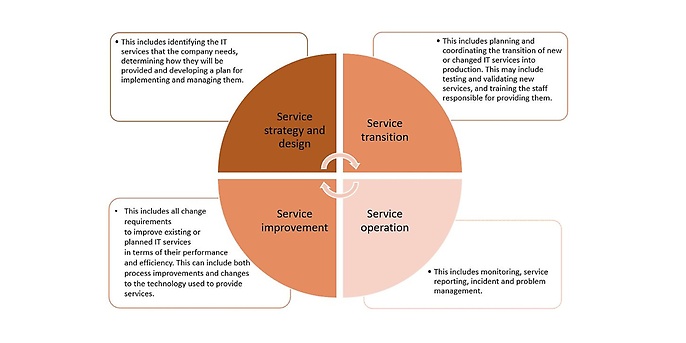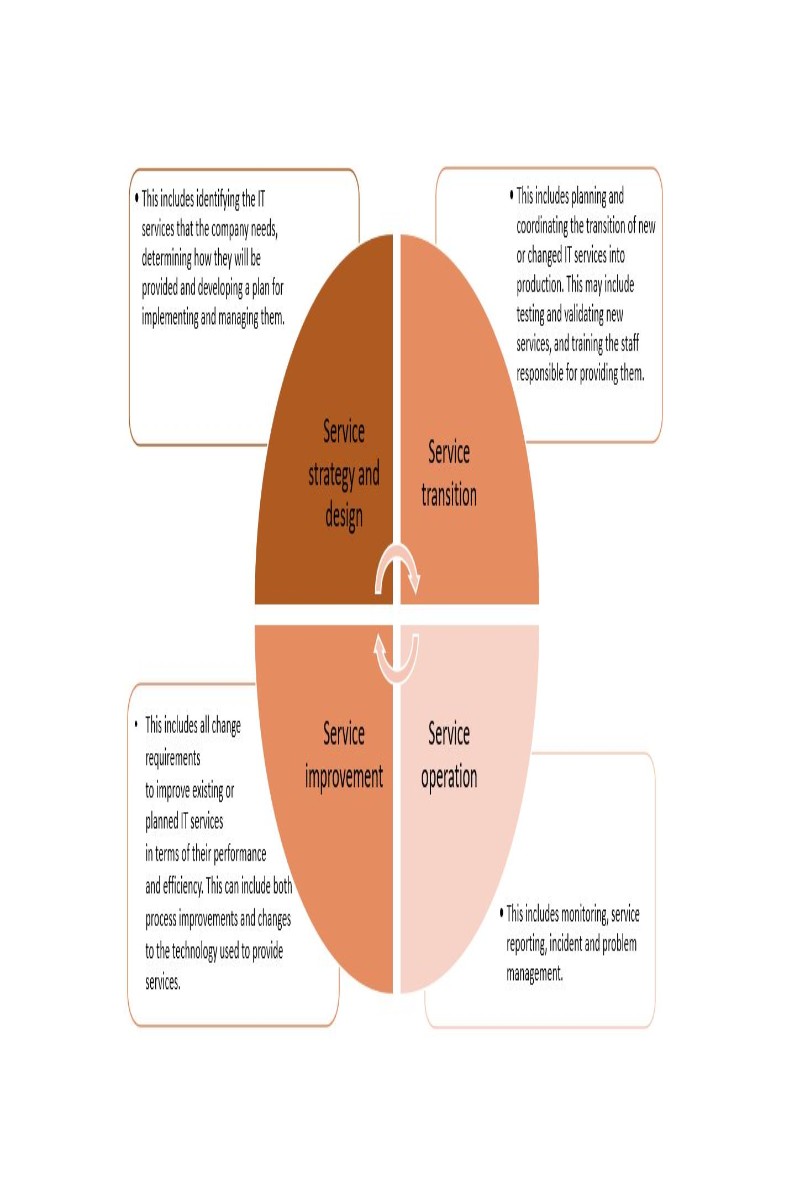6. March 2023 By Arman Kohli
The SMO as a centre of excellence
ITIL 4 (IT Infrastructure Library) is giving the term service management office (SMO) a new type of special importance. Its namesake, the project management office (PMO), is already widely known and established. But what are the differences between these management offices, and what are their respective advantages?
ITIL 4 describes the SMO as a group or department that acts as a centre of excellence for service management at the heart of the organisation and ensures the continuous development and consistent application of management practices in an organisation. It primarily focuses on the service mindset and the application of practices.
The service mindset is an important component of the organisational culture that defines an organisation’s behaviour in service relationships. It comprises the shared values and guiding principles that an organisation adopts and follows. These factors and frameworks are defined in ITIL 4, as are practices, principles and the framework as a whole. The SMO plays a crucial role in providing and managing IT services, and this is even more relevant with ITIL 4.
The PMO, on the other hand, is project specific and primarily takes care of all the issues arising from the projects. There tends to be several PMOs in an organisation depending on its size, but the SMO can be implemented as a strategic element and is unique in its composition, expertise and strategic orientation regarding IT services.
The service office management’s set of tasks
ITIL 4 defines a service value system (SVS) that represents the end-to-end activities, processes and capabilities needed to collectively create and deliver value to customers. The SVS consists mainly of the following components:
- The service value chain represents the core activities required to collectively create and deliver value for customers.
- The governance system represents the governance, policies and decision-making processes required to ensure that the service value system is aligned with the organisation’s strategy and goals.
- The guiding principles, together with the continual improvement practice, provide the framework for the service value system, where the customer’s need is transformed into value.
- The service management practices represent the practices, tools and technologies used to support the service value chain and governance system activities.

This also includes establishing this management office as a central point of contact in the organisation. Performing PMO tasks, acting as a centre of excellence, supporting strategic direction and having a diverse composition also point the way.
In terms of IT services, the following four tasks can be differentiated from each other:

In addition to these core tasks, the SMO may also be responsible for other areas such as IT governance, risk management and compliance. This depends on the specific requirements of the organisation and the size and complexity of its IT operations and ensures that all IT services comply with the organisation’s regulations and laws.
In the agile environment
There has been a growing trend towards the use of agile frameworks in IT service management in recent years. ‘Being agile’ describes a methodology that emphasises flexibility and rapid iteration and is highly suited to the fast-paced and rapidly changing nature of modern IT operations. Agile frameworks, such as Scrum and Kanban, can be used to manage the provision of IT services in a way that is responsive to the needs of company business and promotes continuous improvement. Service management governance, planning and improvement can be done in many ways, depending on the factors that drive the organisation’s vision and mission. Strategy management practice helps determine these factors by analysing the environment, identifying constraints, agreeing and establishing shared perspectives and translating strategy into tactics.
One of the main benefits of using agile frameworks in IT service management is that they foster collaboration and communication between IT staff and the company. Scrum, for example, is based on the concept of cross-functional teams that bring together employees from different areas of the organisation to work on a common goal. This can help break down silos and ensure that IT services are provided in a way that is aligned with the needs of the company.
Another advantage of agile frameworks is that they promote continuous improvement. Kanban, for example, is based on the concept of continuous flow, which means that work is delivered in small increments and continuously reviewed and improved. This can help IT services to consistently develop and improve to respond to the changing needs of the company.
As a result, using agile frameworks in IT service management leads to significant benefits for organisations. The SMO can play a key role in implementing and managing these frameworks, ensuring that they are aligned with the overall IT service strategy and that they are implemented in a way that is consistent with best practices.
Service ownership
In ITIL 4, the concept of service ownership refers to the responsibility and accountability for the provision and management of a particular IT service. The service owner is the person or group within an organisation who is responsible for the overall performance and quality of the service and ensures that it meets the needs of the organisation and its customers.
The service owner plays a crucial role in the ITIL 4 service value system, as they are responsible for ensuring that the service is provided in a way that meets the needs of the company and its customers. This includes ensuring that the service is delivered in accordance with service level agreements and meets performance and quality metrics. The service owner is also responsible for ensuring that the service is continuously improved and that it remains aligned with the needs of the company.
The service owner works closely with the service management office to ensure that the service is provided in a manner that is cost efficient and effective. The SMO provides support and guidance to the service owner in the areas described above: service strategy and design, service transition, service operation and continuous service improvement. It also provides the service owner with the necessary tools and resources to effectively manage and provide the service.
And what do we do with this knowledge?
Now that we know how important service ownership in ITIL 4, an IT organisation should take the following steps to ensure its services are provided and managed effectively:
- 1. Appoint a service owner for each IT service: the organisation should appoint a person or group within the organisation who is responsible for the overall performance and quality of the service and ensures that it meets the needs of the organisation and its customers and possess the necessary expertise.
- 2. Define clear roles and responsibilities: the organisation should clearly define and delineate the roles and responsibilities of the service owner and the service management office to ensure that they are aware of their respective responsibilities and can work together effectively.
- 3. Establish communication and collaboration: the organisation should establish effective communication and collaboration between the various stakeholders, including customers, users and SMOs, in order to satisfy requirements and solve problems in a targeted manner.
- 4. Create a service improvement plan: the organisation should create a service improvement plan that includes identifying areas for improvement, implementing changes and continuously monitoring and evaluating the performance of the service.
- 5. Provide support and resources: the organisation should provide the necessary tools, resources and training to effectively manage and provide the service.
- 6. Monitoring and effectiveness review: the organisation should also build in KPIs and measurement mechanisms and check whether the desired impact can be achieved and further developed.
It can be helpful if the IT organisation follows the guiding principles from ITIL 4, gains the relevant stakeholders from leadership, aligns SMO activities with those of the project management office, product owners and other key service management roles and teams, continuously considers the changing needs of the organisation and is established as a strategic unit in the IT organisation.
At adesso, we provide the exact support you need to do this
A service delivery manager can support the organisation in these steps as follows:
- Facilitate the appointment of service owners and clearly define their roles and responsibilities.
- Develop and implement the service improvement plan and monitor its progress.
- Provide the necessary tools, resources and training to the service owner and SMO to effectively manage and provide the service.
- Ensure that the service is consistent with the overall strategy and objectives of the organisation and complies with relevant laws, regulations and policies.
- An effective service ownership approach within an IT organisation is critical to providing IT services that are aligned with the needs of the company and its customers and are continuously improved to meet the changing needs of the company.
- Focus on the continuous provision and management of IT services to cost-effectively and efficiently provide and continuously improve IT services to meet the changing needs of the company.
- Ensure that IT services are provided in accordance with service level agreements and that they meet performance and quality metrics.
- Greater flexibility to meet the continuous provision and management of IT services and to comply with the organisation’s regulations and laws as part of IT governance, risk management and compliance.
Would you like to learn more about exciting topics from the world of adesso? Then check out our latest blog posts.


